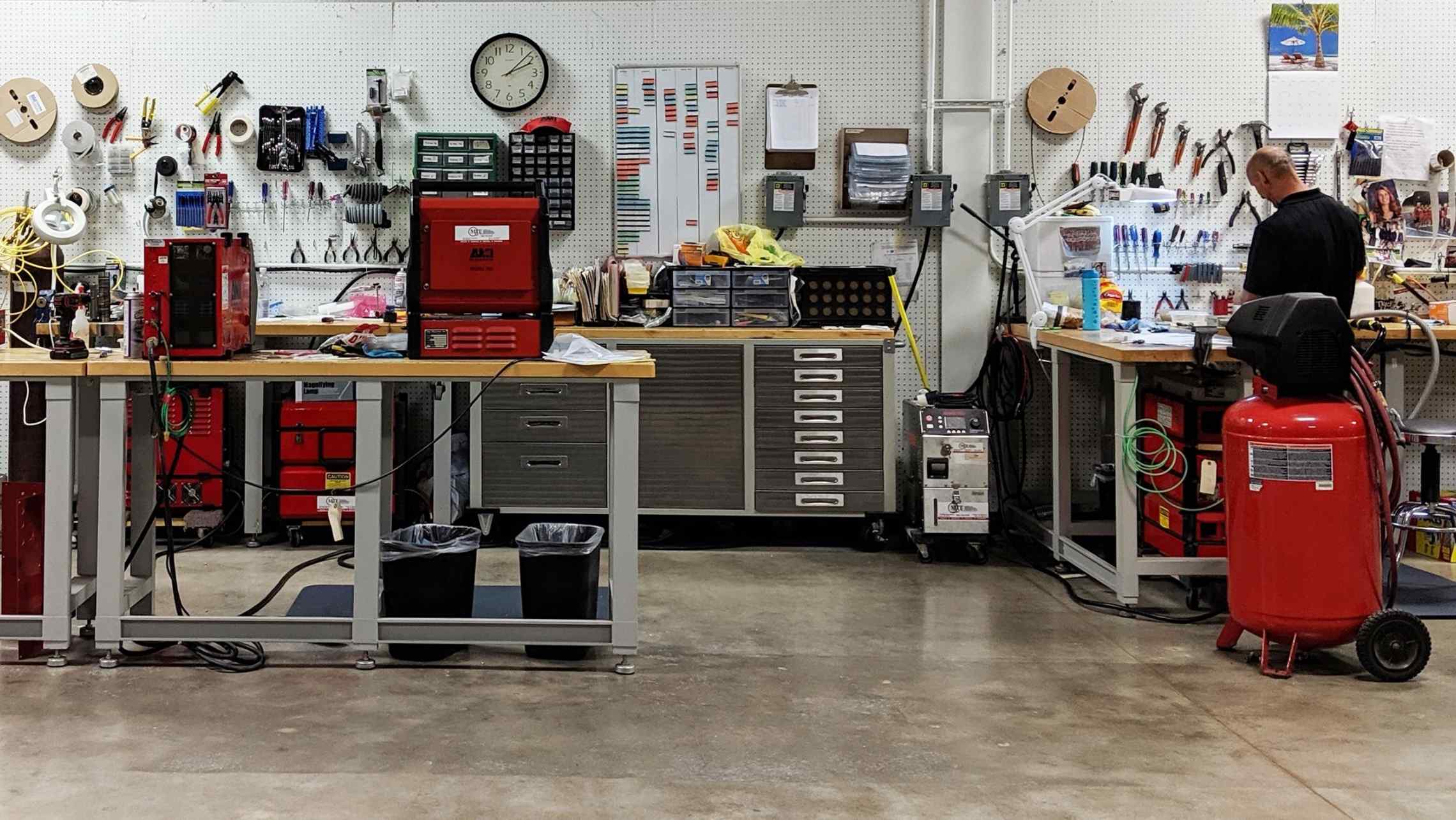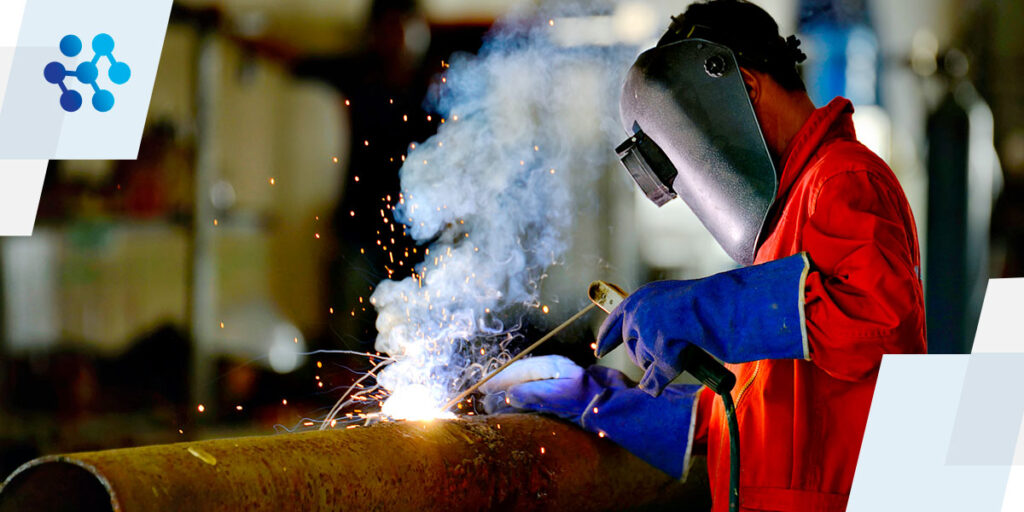Typical Welding Repair Issues and Exactly How to Address Them Effectively
Welding repairs frequently run into a series of concerns that can jeopardize the stability of the final product. Common troubles include insufficient infiltration, porosity, and imbalance, to name a few. Each defect provides distinct difficulties that need details approaches for resolution. Understanding these problems is important for welders intending to enhance their end results and skills. This conversation will certainly check out these typical welding repair service concerns and effective techniques to resolve them.
Inadequate Penetration
Inadequate penetration takes place when the weld metal stops working to totally fuse with the base product, leading to weak joints and prospective structural failings. This issue usually comes from not enough warm input, inaccurate electrode angle, or improper welding speed. Welders might encounter poor penetration due to a mistake of the needed parameters for a specific product thickness or kind. In addition, contamination on the base material's surface can hinder reliable bonding, aggravating the issue. To attend to inadequate infiltration, welders need to guarantee ideal setups on their devices and preserve a tidy work surface area. Normal inspection of welds is recommended to determine any shortages early, permitting for timely adjustments and the prevention of compromised structural stability in welded settings up.
Porosity
Porosity is a typical issue in bonded joints that shows up as little gas bubbles trapped within the weld steel. This issue can compromise the honesty of the weld, resulting in lowered strength and possible failing under anxiety. Belgrade Fabrication. Porosity usually develops from contamination, dampness, or incorrect welding methods, which permit gases to run away right into the molten weld pool. To attend to porosity, welders ought to assure proper surface preparation, maintain a clean workplace, and use appropriate welding parameters. In addition, selecting the ideal filler material and protecting gas can reduce gas entrapment. Normal inspection and testing of welds can aid identify porosity early, ensuring timely corrective actions are taken, consequently protecting the top quality and integrity of the bonded framework
Imbalance
Imbalance in welding can arise from various variables, including incorrect configuration and thermal growth. Recognizing the origin is crucial for reliable resolution. A number of adjustment techniques are readily available to straighten elements and guarantee structural integrity.
Sources of Imbalance
Welding imbalance often originates from a selection of underlying concerns that can compromise architectural honesty. One primary cause is inappropriate fit-up of parts before welding, which can cause spaces and unequal surfaces. Variants in thermal expansion throughout the welding procedure can likewise cause distortion, especially if the products being joined have different coefficients of expansion. Furthermore, insufficient securing and fixturing might stop working to hold components safely in position, bring about movement throughout welding. Badly kept devices, including welding makers and tools, may introduce incongruities in the weld grain, further adding to misalignment. Driver mistake, stemming from inadequate training or experience, can also play a significant role in producing misaligned welds.

Adjustment Methods Available
Addressing imbalance efficiently needs a combination of restorative techniques tailored to the details issues at hand. One usual method is making use of fixtures or jigs to hold parts in the proper placement during welding, making certain consistent positioning. In addition, preheating the products can help in reducing distortion and enhance fit-up. For significant imbalance, mechanical realignment techniques, such as making use of hydraulic jacks or clamps, can be utilized to correct the placement prior to welding. Post-weld warmth therapy may likewise be necessary to eliminate tensions triggered by misalignment. Careful evaluation and modification throughout the configuration phase can avoid misalignment concerns from ending up being considerable issues, promoting a smoother welding procedure and boosting general architectural stability.
Distortion
Distortion is an usual obstacle in welding that can emerge from various variables, including unequal home heating and cooling. Comprehending the reasons for distortion is necessary for implementing efficient avoidance strategies. Addressing this issue not only improves structural stability however additionally boosts the general high quality of the weld.
Reasons for Distortion
When based on the extreme heat of welding, materials commonly undertake adjustments that can lead to distortion. This phenomenon mostly arises from thermal development and contraction during the welding process. As the weld location warms up, the product expands; upon air conditioning, it gets, which can create interior stresses. Furthermore, uneven heating across a work surface can exacerbate these tensions, leading to warping or flexing. The kind of product likewise plays a considerable function; metals with differing thermal conductivity and coefficients of development may react in different ways, causing uncertain distortions. Moreover, bad joint design and insufficient fixturing can contribute to misalignment during welding, raising the likelihood of distortion. Comprehending these reasons is important for efficient welding repair work and prevention techniques.
Prevention Techniques
Effective prevention techniques for distortion during welding focus on controlling heat input and making certain correct joint layout. Preserving a regular warmth input aids to lessen thermal expansion and contraction, which can cause distortion. Using techniques such as preheating the workpiece can additionally reduce the temperature gradient, advertising uniform home heating. Additionally, picking ideal joint designs, such as T-joints or lap joints, can improve stability and decrease anxiety concentrations. Implementing appropriate fixturing to secure the workpieces in place further help in preserving positioning during the welding process. Lastly, staggered welding sequences can distribute warmth more uniformly, stopping local distortion. By applying these approaches, welders can considerably decrease the chance of distortion and boost the overall quality of their welds.
Splitting
Breaking is a typical issue come across in welding repair services, commonly resulting from numerous aspects such as inappropriate air conditioning rates, material choice, or poor joint prep work. The incident of cracks can significantly compromise the honesty of the weld, leading to prospective failings throughout operation. To address this concern, welders must first evaluate find out this here the source, making certain that products are suitable and suitably chosen for the details application. Additionally, regulating the cooling rate during the welding process is crucial; rapid air conditioning can cause anxiety and bring about fracturing. Proper joint design and preparation also add to reducing the risk. Implementing these strategies can improve weld top quality and resilience, inevitably lowering the chance of cracking in finished weldments.

Insufficient Combination
A substantial problem in welding repairs is incomplete blend, which happens when the weld metal does not effectively bond with the base product or previous weld passes - Belgrade. This issue can cause weak points in the joint, potentially jeopardizing the honesty of the welded structure. Variables adding to insufficient blend consist of insufficient warmth input, inappropriate welding technique, and contamination why not try these out of the surfaces being signed up with. To address this concern properly, welders ought to assure appropriate pre-weld cleansing and surface area prep work, along with readjust their welding parameters to achieve sufficient infiltration and blend. Routine evaluation throughout the welding process can likewise help recognize incomplete combination early, enabling prompt rehabilitative actions to enhance the total top quality of the weld
Overheating
While welding repair work can improve architectural stability, overheating presents a significant obstacle that can result in material degradation. Extreme warm throughout welding can modify the mechanical homes of steels, causing decreased toughness, raised brittleness, and warping. This sensation is particularly vital in high-stress applications where architectural reliability is extremely important. Determining overheating can entail aesthetic inspections for discoloration or distortion, along with checking temperature level throughout the welding process. To minimize the risks connected with overheating, welders need to utilize suitable techniques, such as controlling heat input, changing traveling speed, and using suitable filler products. Furthermore, implementing pre- and post-weld heat therapies can assist restore material properties and improve the general top quality of the repair service, making sure long-lasting performance and security.
Often Asked Questions
What Are the Common Indicators of a Welding Defect?

Exactly How Can I Examine My Welds for High quality?
To examine welds for quality, one can make use of aesthetic inspections, ultrasonic screening, and radiographic approaches. Each strategy ensures structural integrity, identifies flaws, and confirms adherence to defined requirements, eventually improving the dependability of the bonded joints.
What Safety and security Preventative Measures Should I Take While Welding?
When welding, one should focus on security by using proper personal protective tools, making sure correct ventilation, securing combustible products away, maintaining a tidy workspace, and recognizing surroundings to stop mishaps and injuries.
Can I Repair a Weld Without Redoing the Entire Joint?
Repairing a weld without redoing the whole joint is possible, depending on the damage (Montana Mobile Welding and Repair Fabrication). Methods such as grinding, adding filler product, or making use of a welding process can successfully resolve details flaws while protecting the bordering framework
What Tools Are Necessary for Efficient Welding Services?
Essential tools for efficient welding repairs include a welding maker, cable brush, mill, safety gear, clamps, and filler materials. Each tool plays an essential role in guaranteeing high quality and security throughout the repair process. Porosity normally develops from contamination, dampness, or incorrect welding strategies, which permit gases to run away right into the liquified weld swimming pool. Poorly maintained tools, including welding machines and tools, might present disparities in the weld bead, more contributing to misalignment. When subjected to the extreme warmth of welding, materials typically undertake adjustments that can lead to distortion. Splitting is a typical concern run into in welding fixings, typically resulting from various factors go such as inappropriate air conditioning prices, product option, or inadequate joint preparation. A significant issue in welding repair work is incomplete combination, which occurs when the weld steel does not adequately bond with the base product or previous weld passes.